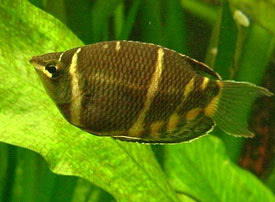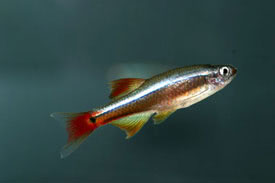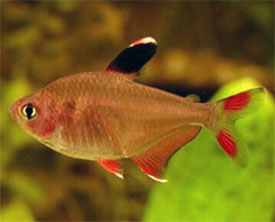Hemiancistrus subviridis - Green Phantom Pleco
 Magyarul / Hungarian
Magyarul / Hungarian

 Magyarul / Hungarian
Magyarul / Hungarian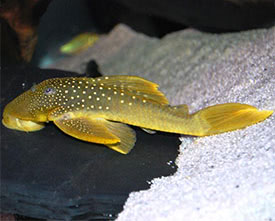
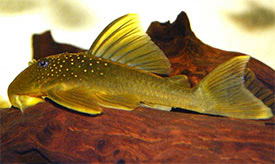
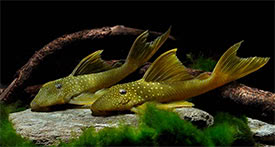
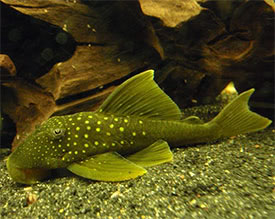
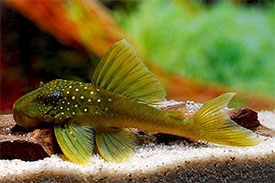
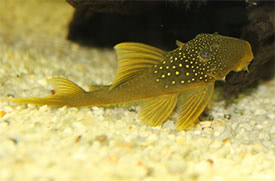
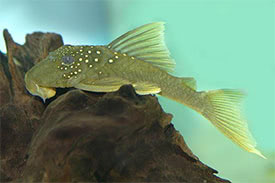
- Scientific name: Hemiancistrus subviridis
- Synonyms: L-200 catfish
- Common name: Green Phantom Pleco
- Group: Catfish
- Distribution: South America; Venezuela, in Rio Orinoco, Rio Iguapo, Rio Ventuari, and Rio Casiquiare drainages.
- Size: 19-25 cm
- Biotope: Found most frequently in cracks and crevices of granitic rocks in flowing water.
- Social behavior: They can be aggressive and territiorial with congeners and similarly-shaped fishes, so many hiding places are essential for them.
- Diet: Omnivorous; In the wild they feed on algae, or biofilm that found on underwater surfaces, and small insect larvae. In the aquarium they should be fed with small live and frozen foods such as bloodworm and artemia, beside tablets for plecos, and alage.
- Breeding: Hard
- Tank: Minimum 160 litres
- Population: 4 fish for 240 litres
- Decoration: Build many hiding places of vertical stonework and rounded boulders. Bogwood and plants are not necessary, but can be used as they provide a good surface area for bioflim growth. Water current should be at its strongest over cracks and crevices in the rocks where the fish will live.
- Temperature: 25-30 °C
- pH: 6.0-7.8
- Hardness: 1.0-10.0 dGH
- Lifespan: 10-12 years
Description: Green Phantom Plecos are very similar to Baryancistrus demantoides, but the key to tell these two apart is that the dorsal fin and the adipose fin are connected in Baryancistrus species, and separated in the Hemiancistrus species. Further difference is that Baryancistrus demantoides has very high dorsal fin. Hemiancistrus subviridis ranges in coloration from blueish green to yellowish green, which depends on how far south on the Rio Orinoco the fish was collected, because the souther you go the lighter the fish gets. The yellow head and body spots are also variable in size and situation within these color forms. These spots largest and more remotely spaced on anterior body below dorsal fin, becoming gradually smaller and more closely spaced towards and onto snout.
The Green Phantom Pleco can be very hard to acclimatize, a large number of these fish die within the first month in captivity due to stress and starvation. Another common problem with this pleco is during the shipping the vital bacteria in their gut system often die off that causes digestive problems especially during the first weeks of captivity, and the fish can not extracting essential nutrients from the food. These fish can often be recognized by the sunken eyes and belly, and these fish must not be bought, because most of them will die within a few weeks.
Mature males usually larger, have broader heads, and also develop thick odontodes on the cheeks and pectoral fins. Odontodes are also present in the body, behind the dorsal fin in males.
Has been bred in the aquarium. A cave spawner, the male guards a clutch of approximately 30-40 yellow colored eggs. The eggs hatch in 3-5 days, fry absorb their yolk sac and start feeding in 10-11 days.
Sources:
http://www.fishbase.org/summary/62499
https://www.scotcat.com/factsheets/hemiancistrus_subviridis.htm
https://www.planetcatfish.com/common/species.php?species_id=223
http://www.practicalfishkeeping.co.uk/features/articles/keeping-and-breeding-the-green-phantom-plec
http://www.plecoplanet.com/forum/showthread.php?t=1834
http://www.scielo.br/scielo.php?script=sci_arttext&pid=S1679-62252005000400011
http://www.fishbase.org/summary/62499
https://www.scotcat.com/factsheets/hemiancistrus_subviridis.htm
https://www.planetcatfish.com/common/species.php?species_id=223
http://www.practicalfishkeeping.co.uk/features/articles/keeping-and-breeding-the-green-phantom-plec
http://www.plecoplanet.com/forum/showthread.php?t=1834
http://www.scielo.br/scielo.php?script=sci_arttext&pid=S1679-62252005000400011
Hasonló vízparamétereket igénylő fajok






